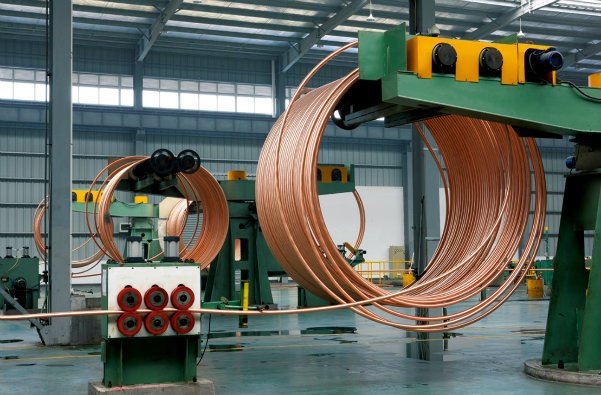Pipes may be used in a variety of ways throughout the house, and they’ve helped to arrange some of them. The importance of pipes in ensuring comfort cannot be overstated. Your water system is maintained through the pipes system, even if you had a system. If you had a gadget that stored your water supply via a network of pipes. As a result, the material utilised to make pipes should be long-lasting and stable. Copper coatings are one of the best or most frequent pipe construction choices in India, according to protective coating producers. However, the copper covering provides long-term durability, hardness, and dependability. The issue is, what makes copper pipes so good?
Copper is a more durable and powerful metal.
It is self-evident that everyone expects the pipes to last. Pipes are put beneath the walls, creating a stressful situation if they need to be repaired. Copper coatings, on the other hand, will save you the trouble. Copper is also the only material that has a decent strength and durability over a period of 50 years.Its capacity to maintain strength under extreme stress is higher, much as other metals.
Its adaptability is impressive.
Copper is utilised to improve its usage in many sorts of, many applications due to its remarkable characteristics. While most experts utilise copper in both ancient and new homes, “upper” is employed for long-term reliability.
Domestic water distribution and supply are more sustainable.
Copper Tubes are extremely corrosion resistant due to their excellent heat protection. It’s a clean, safe, and natural substance that plays a big role in medical oxygen and hospital supplies. Copper pipe has a remarkable resistance to heat, making it an excellent firefighting material. Because of its strength, durability, and flexibility, it is perfect for pipe systems. To ensure longevity, most technicians opt for cooler pipes.
Cost-Effective and Economical.
Copper is more expensive than PEX or PVC, but because of its unique properties, it has a longer lifespan and requires less maintenance. As a result, plumbing with copper pipe will be a long-term financial investment. Copper requires far less maintenance to be repaired over time. Fortunately, it will save you money by preventing you from incurring unnecessary costs. Copper has a flexible character, which allows it to adapt to a variety of forms and sizes, as well as being simple to put up.
More Reliable and Safe.
Allow it to be used in the water supply system because it is non-toxic and sanitary. Copper’s biostatic and impermeable nature prevents it from absorbing any type of contaminant or poison, making it unsuitable for bacterial development. Another essential feature of copper is that it is fire resistant, which means it will not catch fire and will protect walls and pipes in the case of a house fire. Copper pipes have a melting point of 2,000 degrees Fahrenheit and are resistant to heat.
Here are its applications
When applied to a badly prepared surface, no coating will function as expected. Dirt, grease, dust, previous finishes, and finger prints must all be removed from the metal surface. After cleaning, coating should be applied as soon as possible, with measures made to avoid recontamination. Working in a low-dust environment, wearing white gloves, and adding tarnish inhibitors (chelating agents) to the surface are all precautions to take.
Cleaning with ordinary steel wool is not recommended since the pads may include compounds that discolour copper metals. Silicon carbide (Scotch-brite) pads or wheels, stainless steel pads, and powdered pumice stone are all good abrasives. The pumice powder is dissolved in a 5% oxalic acid solution and applied with a cloth. Remove any residues and wash the surface dry with a clean towel.On highly polished (mirror) surfaces, abrasives should not be utilised. Before coating, items that have been polished with buffing compounds should be degreased or thoroughly cleaned to eliminate any residue.
Solvents like butyl cellosolve and trichloroethylene are commonly used to degrease. To avoid streaking and discoloration, large areas may need to be wiped dry with lint-free wipers. Before coating, freshly plated components must be completely neutralised and washed in hot water.
The spraying area should be clean and properly ventilated, with a moderate temperature (between 50 and 900F), low humidity (definitely less than 80 percent when organic vehicles are employed), and a moderate temperature (between 50 and 900F).
A total dry film thickness of 0.5 to 1.5 mils is usually achieved by applying enough coatings. Greater thicknesses tend to show through, giving the metal a varnished look. Thinner coatings may be recommended by the coating producer for certain purposes.


Dear,
I am looking for a supplier that can deliver a coating line for copper tubes of 10mm and less.
Kindly let me know if your company can support this request.
Thanks.
Best regards,
Frederik Van Moer
Board member
Elo